Pneumonia or pneumonia is a very dangerous pathology that unites a whole complex of diseases into a single ailment. They are all quite similar, as they provoke development inflammatory process in the tissues of the human lungs. Only timely and properly organized therapy for pneumonia can be a guarantee that no complications will follow. Remember, this pathology not only negatively affects the human body, but also often causes death.
Meningitis, how to deal with it and find out more
In their book, the mummies of the National Committee Against Meningitis tell their stories of how the loss of a child changed her, and how they did not give up the pain by carrying out a project dedicated to such parents. He was born so free of meningitis. More than 93 different types of pneumococci are known, which differ in the type of capsule that contains them. Pneumococcus easily circulates from subject to subject; Transmission occurs through the air through droplets of saliva emitted by sneezing, coughing, or simply speaking, or by exchanging material contaminated with the respiratory secretions of carriers of the bacteria.
Regardless of the complete etiology of pneumonia, the reason for its appearance and further development is the same - the infection gets into the alveoli and bronchial epithelium of a person. No one is immune from such a phenomenon, because the causative agent of pneumonia can get into the respiratory tract to any person. Of course, pneumonia does not always develop due to the transmission of infection by airborne droplets, but this phenomenon takes place in a considerable number of infection situations.
Cases of the disease occur mainly in winter, when Chronic Inflammatory Syndromes and influenza are common, which are prone to onset. Infections are sporadic, epidemics are rare, but can occur in limited communities such as kindergartens, schools, and other institutions.
Symptoms in pneumococcal carriers are associated with conditions that alter the integrity of the airway mucosa, associated viral infections, or diseases that reduce the effectiveness of the immune system. The infection usually presents with symptoms of the upper respiratory tract, where this bacterium is located, giving sketches of otitis media and sinusitis. In cases where microbes reproduce in areas where they are usually absent, such as blood, liquor or lungs, the disease manifests itself in a serious form, with pictures of bacteremia, meningitis and pneumonia.
Often, pneumonia develops due to the early presence in the human body of some infection, which caused the development of a frivolous ENT disease, which gave such an unpleasant complication.
The factors of predisposition to the development of pneumonia are such things as:
- general hypothermia
- frequent nervous stress
- hormonal problems
- the presence of chronic respiratory diseases
- weakening of immunity
It should be understood that there are a huge number of infections that can cause pneumonia (these are bacteria, viruses, and fungi). It is simply impossible to fully protect yourself from them, but it is necessary to maintain the state of the body in good shape.
These serious forms of infection, called invasive forms, can progress to sepsis, a very high mortality condition characterized by disseminated bacterial invasion in the blood. People at risk of developing a serious infection are children, especially in the first two years of life, and the elderly. People who suffer from pathologies that suppress the immune system, people with chronic diseases and people who have their spleen removed are also at risk.
Pneumococcus is the most responsible microorganism for acute otitis media in a child, pneumococcal infection is the main cause of bacterial meningitis and bacterial pneumonia in the community. Meningitis is the most common manifestation of severe pneumococcal infection in children, while other age groups are more likely to suffer from pneumonia and bacteremia. Invasive infections are also the most common cause of hospitalization in children and adults.
Remember, the weaker the body and its immunity, the more chances of "catching" pneumonia. This is especially true for adults who often lead far from a normal lifestyle, sleep inappropriately, and generally abuse the body's resources.
First signs
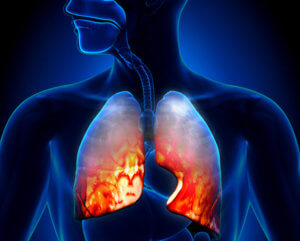
Most cases of the disease occurred in adults and the elderly; Almost half of the affected people were infected with pneumonia with bacteremia. Nearly 10% of infections have infected children, but these are the most vulnerable and most affected, especially in the lower half. In the first year of life, reporting the number of cases in the composition for age groups of the population, the incidence of serious infection reaches its highest level in the first year of life and remains high up to four years, Remarkable numbers considering that in the general population, approximately 5 infections are estimated every 1000 people.
As mentioned earlier, pneumonia is a pathology that causes damage to the tissues of the lungs and some other nodes. respiratory system... Due to the developing inflammatory process, a person simply cannot feel well and he has some symptoms of pneumonia.
It is necessary to diagnose symptoms in the early stages of the disease, as this will help to avoid any complications and, in general, simplify the treatment process.
The infection manifested itself as meningitis in 36% of cases, such as bacteremia in 35.4% of cases and bacteremia in 28.6% of cases. For meningitis, it can lead to permanent disability and death in the most serious cases; mortality reaches 40% in adults, while in children under two years of age, about 1-3%. Despite its severity, pneumococcal infection can be prevented by vaccination. The inclusion of the vaccine in vaccination programs for children under two years of age has shown a reduction in nearly 80% of infections in the United States. Severe cases of pneumococcal pneumococcus in the vaccine and generally cessation of serious infections in all types of pneumococci.
First of all, you should pay attention to the following signs that indicate pneumonia:
- intensifying and often repeating of absolutely any nature
- body enhancement within different limits
- severe feverish condition
- shortness of breath
- feeling short of breath
- severe weakness, drowsiness and fatigue
- increasing hoarseness and loudness of breathing
Depending on the type of infection that caused the inflammation, the symptoms can be either pronounced or rather mild. In any case, you should pay attention to it and immediately contact the clinic for help. IN
Significant reductions in infections have also been demonstrated in unvaccinated young adults, especially family members of vaccinated children, who have benefited from the effects of vaccination. The positive effect of vaccination was also recorded in European studies, despite the heterogeneity of programs and data collection methods in different countries, the reduction in severe infections was about 40%, reaching the maximum benefit in children under two years of age.
Observed differences in the epidemiology of invasive pneumococcal disease after routine infant vaccination. It is an infection that affects the respiratory tract and, in particular, the lungs. How can we recognize symptoms? How to act in prevention to prevent the occurrence of this problem in children and adults should not be underestimated at all and is potentially dangerous?
it is important not to forget that pneumonia has a short incubation period (2-4 days), after which it develops at an increased rate and can cause irreparable damage to the health of the sick person or even cause death.
 Lung inflammation is a complex of diseases affecting the respiratory tract. That is why it is subdivided into some forms, determined by the degree of damage and the severity of the course of the disease. Determining the correct characteristics of the inflammatory process is extremely important for organizing the correct therapy.
Lung inflammation is a complex of diseases affecting the respiratory tract. That is why it is subdivided into some forms, determined by the degree of damage and the severity of the course of the disease. Determining the correct characteristics of the inflammatory process is extremely important for organizing the correct therapy.
First of all, it should be said that it can affect only one or both of the lungs and be more or less severe depending on the microorganism it causes. Once the infection is triggered, the alveoli of the lungs become inflamed and filled with fluid, which partially compromises breathing.
Among possible reasons there may be not only bacteria and viruses, but also other microorganisms, the use of certain drugs, radiation therapy, or even contact with certain pollutants or irritants. Now we find the symptoms that appear in the case of pneumonia.
Presently medical workers there are 4 main forms of pneumonia in adults:
- A disease that occurs with an acute form of inflammation. With timely treatment, it is relatively not dangerous for a person, but in its absence it can cause a number of complications. This form of pneumonia can develop both as an independent disease and as a consequence of complications of other respiratory diseases.
- A disease proceeding with a chronic type of inflammation. This form is characterized by the constant presence of infection in the tissues of the lungs and other organs of the respiratory system. The disease is activated systematically, often with a weakening of immunity or the presence of other factors of predisposition to pneumonia. It is quite rare, but it is an extremely dangerous disease, especially in the absence of timely and competent therapy.
- A disease that occurs with an acute form of inflammation that affects most of the lung. Otherwise, this form is called croupous. It is one of the most dangerous forms of pneumonia, therefore it requires treatment only under the supervision of an experienced specialist. A similar form of pathology arises due to poor-quality or long-absent therapy of acute or chronic pneumonia.
- A disease proceeding with a segmental (focal) inflammatory process. This form differs from others in that inflammation affects individual segments of the lungs and airways. This type of pneumonia, though not so dangerous, must be treated in a timely manner, otherwise it can flow into more severe forms of the disease.
Without special medical knowledge, conducting a series of examinations and tests, it is simply impossible to determine the form of inflammation. However, be aware: the stronger the symptoms of the disease, the more dangerous its form. It is possible to treat a complex type of pneumonia only in a polyclinic, otherwise the risk of death increases significantly.
The symptoms of pneumonia can be of various kinds: there are common ones that are easily interchanged with the presence of mild infections, while others are considered real warning bells that should be underestimated. Symptoms may also vary depending on the microorganism that caused the pneumonia, if it is a bacterium, it will be more violent and viral infection will have an easier course, similar to bacterial flu.
Summing up the symptoms of pneumonia, you can. Chest pain or abdominal pain. Some good hygiene standards can be implemented to prevent pneumonia, which usually helps to avoid the risk of infection. In particular, you should frequently wash your hands with soap and water, avoid sharing glasses and cutlery or a toothbrush, and avoid contact with people who have pneumonia or who suffer from unusually impaired respiratory problems. It is then important to always cover your mouth with your mouth and nose in case of dementia or cough.
Diagnostic methods
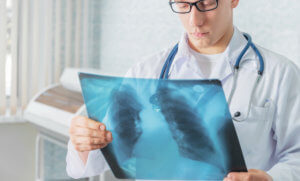
It is impossible to diagnose pneumonia solely by analyzing the symptoms, therefore, if there is any suspicion of pneumonia, it is important for a person to visit a doctor immediately.
Do not smoke or use masks when they come into frequent contact with polluting or irritating agents. Strengthening the immune system in both adults and children is always good advice not only to prevent the risk of pneumonia, but also to prevent the occurrence of other pathologies. Many types of infection, in fact, have more free field in the body, whose immune defenses are weak. It is also important to follow a healthy lifestyle and balanced diet.
If there is a persistent cough or persistent cough that does not go away after a few days, it is always a good idea to see a doctor who will ausculate the lungs to see if there are signs of an ongoing infection, and if he orders a blood x-ray and blood test to detect possible viruses and viruses. Even bronchitis should not be underestimated, if possible, if not properly treated, the inflammation gradually passes into the lungs.
The complexity of the diagnostic measures of pneumonia lies in the fact that this pathology often has the same symptoms as in less serious ailments of the respiratory tract. At the same time, developing pneumonia can cause much more problems than other ENT ailments.
Given such a danger of the disease, doctors must include the following procedures in the diagnosis:
Recapilation is good to prevent pneumonia and other infections. Do not use in conjunction with other items you use to eat or drink. Do not come into contact with infected people. Use masks when in contact with contaminating or irritating agents.
Strengthen the immune system. A healthy lifestyle and a balanced diet. Do not underestimate any infection in respiratory tract... It should be noted, however, that not all types of pneumonia are contagious. The doctor will decide on a case-by-case basis.
- blood, urine and sputum tests
- pulmonary x-ray
- fibrobronchoscopy and computed tomography chest
Only based on the result of several diagnostic measures and the nuances of each specific case, the doctor can confidently determine whether the patient has pneumonia or is developing any other ailment.
First, it is necessary to determine which microorganism caused the pneumonia. In the event of a bacterial infection, you will need to undergo antibacterial medicine, which will indicate the dosage and set time to which you will stick. In the case of viruses, it is possible that the doctor prescribes antiviral drugsbut more often a rest period is sufficient.
It is very important if pneumonia is in bed and attention is paid to maintaining proper hydration of the body, drinking so much water is fundamental advice, as fluids can help the mucus reef deposited in the lungs. Typically, with the right therapy, within a maximum of 2 weeks, you will be completely cured of your pneumonia. However, it should be said that some categories of people, especially at risk, may require hospitalization, especially if pneumonia affects newborns, children early age, elderly or sick people and therefore already fragile.
Self-diagnosis of pneumonia is not only impossible, but also extremely dangerous, because by starting to treat the disease incorrectly, you can accelerate its development or provoke complications.
Drug treatment

Runny nose, cough, fever, and rash. Is it irritation, measles or chickenpox? These symptoms, also accompanied by conjunctivitis, reveal the presence of measles in children. Measles is a typical childhood acute viral disease, which is part of the so-called morbillivirus from the paramyxovirus family. This is one of the tallest infectious diseases... The incubation period is about ten days, with an additional 2 to 4 days before the rash appears.
The highly contagious virus spreads through coughing and sneezing, close personal contact, or direct contact with infected secretions or throat. The virus remains active and contagious in the air or on infected surfaces for two hours; It can be transmitted from an infected person from four days before the rash appears to four days after the rash appears. Measles outbreaks can cause epidemics that cause many deaths, especially among young malnourished children.
Since pneumonia in adults is a rather dangerous ailment, medications are the basis for its treatment. Their appointment should be dealt with by the attending physician, because only he knows the features of a particular case.
Moreover, it is the specialist who, according to the test results, can find out what type of infection is the causative agent of pneumonia, based on this indicator, the main vector of therapy is determined.
Measles in the early stages, as it presents
In countries where measles has been largely eliminated, cases imported from other countries remain an important source of infection. 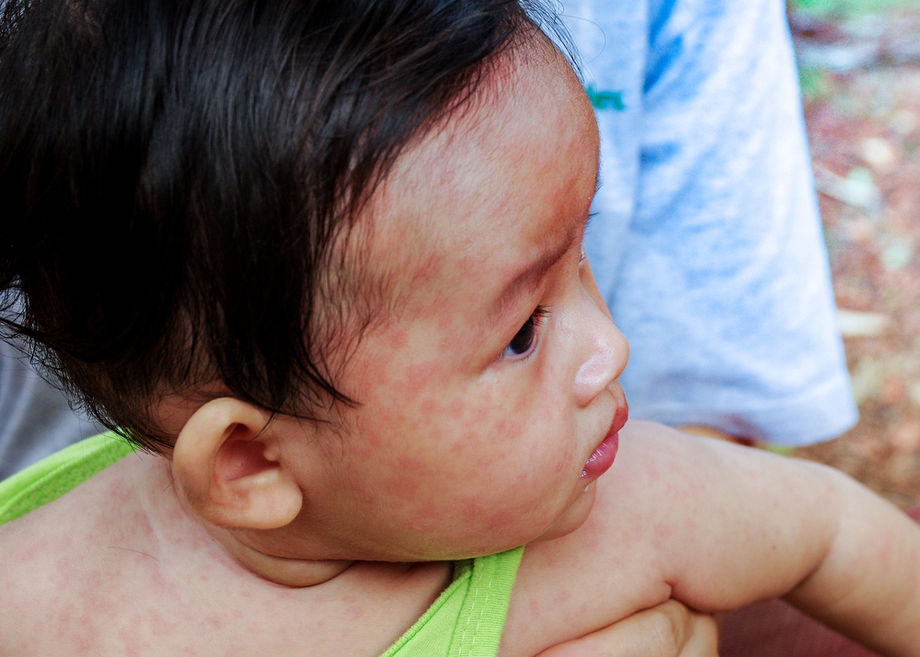
The prodromal phase is characterized by the onset of fever, malaise, rhinitis, conjunctivitis, and cough. A runny nose, cough, redness of the eyes and watery eyes, and small white patches all inside the cheeks may develop in the initial stage. After a few days, it manifests itself as an outbreak of a rash, usually on the face and upper neck. within three days, the rash eventually spreads to the arms and legs.
Regardless of the etiology of pneumonia, the main principle of its treatment is the organization of complex therapy, which is aimed at stopping the inflammatory process in the respiratory tract and improving the general tone of the patient's body.
It is important to use the following types of drugs in the treatment of pneumonia:
- antibiotics (with a bacterial pathogen)
- antiviral medicines (with a viral pathogen)
- antifungal medicines (with a fungal pathogen)
- expectorants (for problems with expectoration and severe coughing)
- detoxification and glucocorticosteroid drugs (in the presence of toxic shock caused by pathology)
- antipyretic drugs (when the temperature rises)
- cardiovascular stimulants (with oxygen starvation and severe shortness of breath)
- vitamin complexes and immunostimulants (for any course of the disease)
More information about pneumonia can be found in the video:
It should be understood that self-medication of pneumonia will not work. First of all, this is due to the fact that the dosage of drugs and the course of therapy are determined exclusively by the doctor, taking into account all the characteristics of each particular case.
In addition to basic medications, the attending specialist may prescribe:
- oxygen therapy (with oxygen starvation and severe shortness of breath)
- artificial respiration therapy (with oxygen starvation and severe shortness of breath)
- inhalation techniques (for problems with expectoration and severe coughing)
- rarely - surgical techniques treatment (for severe lung damage)
Folk recipes

Traditional methods of treating pneumonia are not the basis of treatment. These methods of treating an ailment can be used only as an aid to the main, medication course.
Folk recipes cannot stop or in any way stop pneumonia, but they perfectly help in the fight against unpleasant symptoms of pathology and in increasing the immune tone of the sick person's body.
The most interesting, effective and often used alternative methods of treatment for pneumonia are as follows:
- Cottage cheese compress. Method of preparation: take 100 grams of cottage cheese and mix it with a teaspoon of honey, heat the mixture and put it in cheesecloth in a thin layer, then roll it up in several layers. Application: apply gauze with the mixture wrapped in it to the patient's chest, then securely fix the compress with a terry towel over your shoulder and leave it for 4-8 hours. Contraindications: taking antibiotics.
- Cleansing the lungs from phlegm with honey and nuts. Method of preparation: take 50 grams of any nuts and honey, chop the first and mix with the second ingredient into a single mixture. Application: the resulting mixture must be eaten by the patient within one day, use up to complete recovery... Contraindications: allergy to the components of the product.
- Softened with milk and figs. Method of preparation: Heat one glass of unpasteurized milk and mix it with shabby figs. Application: the resulting solution must be drunk by the patient twice a day after meals. Contraindications: allergy to the components of the product and elevated temperature.
- Steam inhalation. Cooking method: take 3-4 large potatoes and boil them with skin in 2-3 liters of water, after boiling, turn off the gas and add 10-20 drops of eucalyptus oil to the water. Application: sit the patient in front of this liquid and cover him with a terry towel, he must inhale steam for 10-20 minutes, the procedure is repeated every day, once a day. Contraindications: allergy to the components of the drug, fever and the presence of purulent inflammation in the respiratory tract.
- Vitamin teas. Method of preparation: brew tea and add honey, jam, dried fruits and similar products to it, which will saturate the drink with vitamins. Application: the patient needs to drink such teas throughout the course of therapy and as often as possible. Contraindications: allergy to the components of the product.
Do not forget before using this or that folk method treatment of pneumonia, ask your doctor if this practice is appropriate in your particular case.
What not to do with pneumonia

Given the danger of pneumonia, it is important not to forget about those things that can cause any complications in the treatment of this ailment. It is most important to exclude from your life the following list of actions for the period of pneumonia treatment:
- smoking
- drinking
- any physical and emotional stress (pneumonia can only be treated with bed rest)
- if fever is present - taking a bath, shower or walking
- visit to the bath or sauna
- eating cold drinks, fatty foods, spicy and too salty foods.
Possible complications
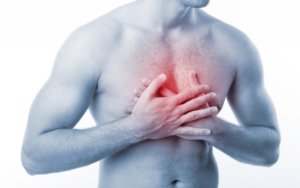
As noted earlier, pneumonia is dangerous not only for its course, but also for the complications that it can cause. The appearance of complications is rare in the implementation of high-quality and timely treatment of the disease, but with its low quality or complete absence of complications, it is only a matter of time.
The most common ones are as follows:
- destruction of lung tissue
- obstruction
- pathological pathologies of the respiratory system
- heart problems
- development of pathologies of the spinal cord or brain
- septic shock
- cardiogenic edema or sepsis
- blockage of blood vessels in the chest area
It should be understood that the presence of a number of complications can cause death. Therefore, it is important to treat pneumonia correctly and in a timely manner.
Of course, it is not easy to treat pneumonia, but it is possible.
However, is it worth it? Isn't it easier to just prevent the development of the disease? Of course, no one and anyone can fully guarantee protection against pneumonia, but the risk of its development can be reduced several times if you follow simple preventive measures.
The general list of those is as follows:
- Eliminate hypothermia of the body.
- Conduct hardening systematically.
- Treat all respiratory diseases completely and promptly.
- Do special breathing exercises periodically.
- Vaccinate against highly dangerous infections.
- Minimize the inhalation of harmful fumes and dust.
- Try to lead a normal life: exercise, healthy eating, sleep, and so on.
The most serious think about the prevention of pneumonia is for those people who are at risk. These include everyone who is affected in one way or another by the previously mentioned factors of predisposition to this pathology.
In general, identifying the first signs of pneumonia in adults and starting to treat the disease is quite simple. The main thing is to adhere to the advice from the material presented above. We hope that in today's article you have found answers to your questions. Health to you!
Readers liked:
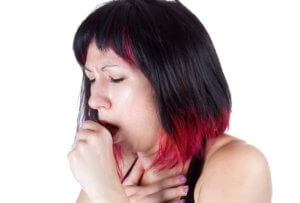
Signs of pneumonia appear when the immune system is disturbed, infected with toxic pathogens: mycoplasma, pneumococcus, chlamydia. The most common time for symptoms of pneumonia to appear is during fall-winter, or spring-summer. Inflammation of the lungs as manifested in people of different ages, diagnostics and complications, read on.
Primary manifestations in adults
How does it manifest in adults? After the introduction of the pathogen into the body and damage to the bronchi, inflammation begins to develop. Transmission can occur by airborne droplets, upon contact with a carrier or a sick person. The incubation period lasts 3 days, after it goes into a state of activity, the fluid in the alveoli of the lungs begins to rapidly accumulate.
After prolonged stress, hypothermia, hormonal disruption (with menopause in women), the local defense of the body weakens and cannot cope. It happens that it is difficult to suspect pneumonia, the symptoms of the disease need to be known already in the first stages, in order to take up treatment in time. The course of the disease is fatal.
Early manifestation of pneumonia:
- an increase in body temperature;
- prolonged cough;
- general weakness of the body;
- fever, drugs do not work;
- shortness of breath, lack of air.

Manifestations in children
How does pneumonia manifest in a child? There are some peculiarities. Parents need to pay attention or suspect, with such problems in the child as:
- Breathing problems. The child may have noticeable rapid breathing. Very often he involuntarily, constantly goes to sleep only on one side. The next symptom is that when inhaled, in the area of \u200b\u200bthe diseased lung, the skin should be drawn into the intercostal spaces; on the other side, this phenomenon should not be observed. The breathing rhythm can be disturbed, the frequency and depth of breaths often change. In infants, shortness of breath occurs, it is characterized by nodding the head in rhythm with breathing, they can also puff out their cheeks and retract their lips. Foam can be discharged from the mouth and nose, this is an extreme symptom in which hospitalization is necessary.
- Body temperature. Increased body temperature up to 38C, lasts about 3 days, antipyretic drugs do not work, in very young children, it can be 37.5C. At the same time, a sign of intoxication is on the face: increased sweating, lethargy, fatigue, poor appetite. In young children, thermoregulation is imperfect and the immune system is not fully developed, they may not experience large jumps in temperature.
- Cough. After the onset of a sore throat, a slight coughing may appear, after which the cough will become dry and painful, aggravated by crying, feeding. After a while, sputum appears.
- Observe the behavior. A child with this ailment may become suspiciously moody, lethargic, nervous, sleep disturbances, poor appetite, or refusal to eat at all are possible. Nausea and vomiting appear, infants regurgitate and refuse breast milk.
Important! These signs of inflammation are very important, as soon as you notice one of the above problems in a child, feel free to go to the clinic to take the necessary tests.
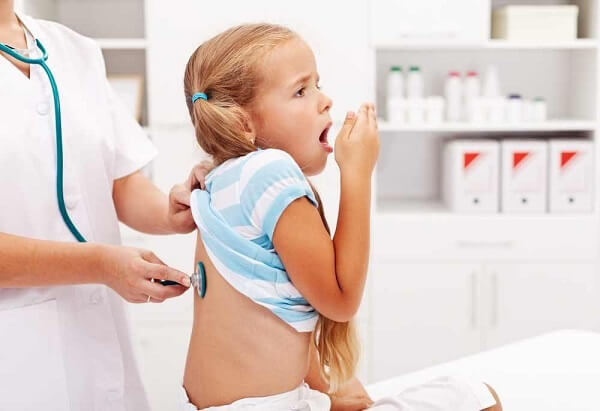
Asymptomatic inflammation
How does pneumonia proceed without fever? Symptoms, such as fever, appear when the immune system is lowered, and taking antibiotics in the wrong amount becomes the cause.
The course of the disease may not be noticeable at all, without coughing or other manifestations. Only some factors can determine the development of the disease:
- face turns pale;
- whistling breathing;
- increased heart rate even with weak activity;
- general weakness.
Sweating may also increase, thirst will increase, and pain while turning the torso. When these manifestations are detected, an accurate diagnosis is needed, pneumonia without fever is an insidious and very dangerous disease.
Diagnostic methods
Diagnostics is based on external examination, delivery of tests and clinically instrumental approaches.
Diagnostic methods through the laboratory:
- detection of harmful bacteria in smears, sowing a culture of infection on a nutritional medium;
- biochemistry indicators: increased liver function, increased amount of c-reactive protein;
- detection of carbon dioxide in the blood;
- an increased number of neutrophils and leukocytes in the blood;
- diagnostics of mycoplasmas, legionellosis, chlamydia;
- microbiological research;
- bronchoscopy methods - used to detect atypical bacteria, they can be used to identify people with immune deficiencies.
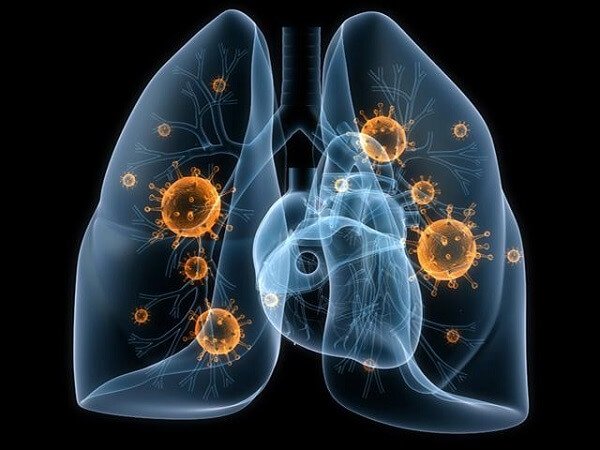
Diagnosis of pathologies by X-ray irradiation:
- MRI and CT;
- chest x-ray in different projections;
- ultrasound of the pleural cavity if there is a suspicion of pleural inflammation with fluid accumulation.
The manifestations of the disease in the pictures
What does pneumonia look like on x-rays? In this disease, X-ray is a detection method, and at the same time a controller of its development during subsequent treatment. Inflammatory changes are divided into several forms, the radiograph of which is different.
X-rays for this disease show black spots (popular opinion). In scientific parlance, this is "obfuscation." On the picture, this is expressed in white, since the X-ray itself is a negative.
What spots are visible during inflammation:
- small, medium and large focal;
- subtotal and total;
- focal and common.
It is these symbols that help describe the visible spots on the photograph of a patient with pneumonia. Decoding also consists of a description of the shadows, they are different in intensity. The more intense the shadow, the less airiness of the pulmonary epithelium. With inflammation, dark areas are irregular in shape and blurred outlines.
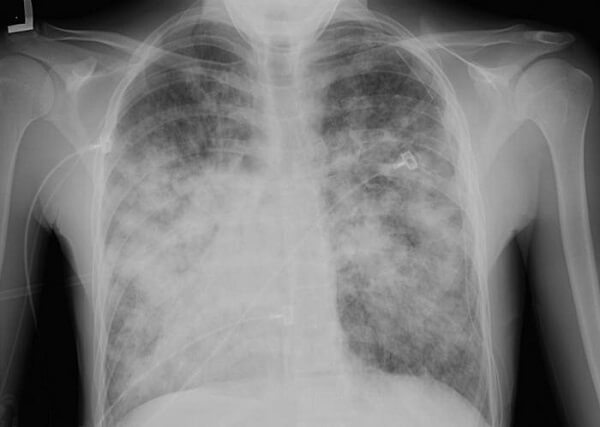
Complications
The disease in a large number of cases is perfectly cured. But for high-quality treatment, you need to follow all the rules established by the doctor, only in this case you can fully recover.
Very often patients stop taking at will drugsas soon as the symptoms of the disease pass. A disease that is not completely cured will strike with renewed vigor, the form will be more acute, and can cause the following complications:
- fibrosis of the lung;
- chronical bronchitis;
- abscess, gangrene;
- bronchial asthma;
- disorders of pancreatic secretion.
People with acute inflammation chronic form of the disease, you need hospitalization. For any form of the disease, the nature of the course is not important, antibacterial agents are used. Modern strains of bacteria are too resistant to penicillin antibiotics.
Patients diagnosed with pneumonia need to be aware of the dangers of self-treatment, it will turn into very tragic consequences. At the first signs of illness, get diagnosed in the clinic and follow all the instructions of the specialists.
